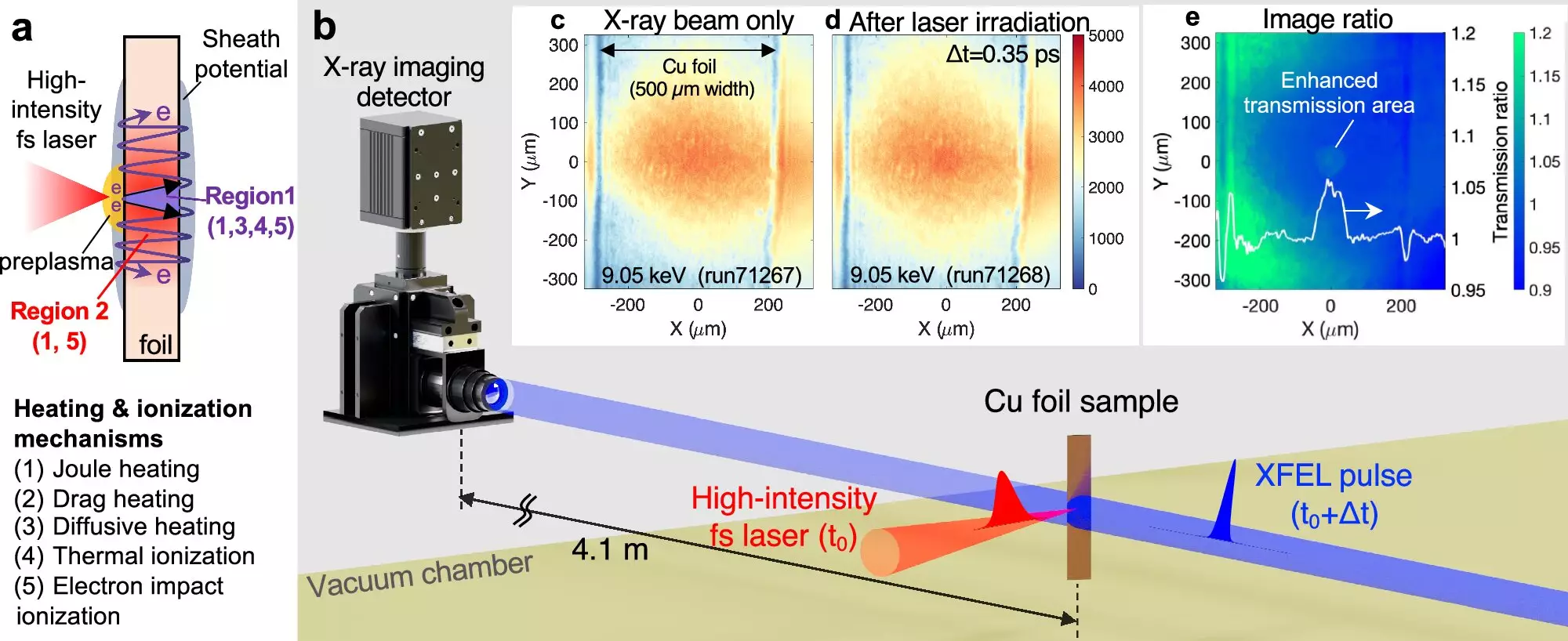In the realm of high-energy physics, the study of warm dense matter (WDM) has emerged as a key focal point due to its implications for understanding various cosmic phenomena and applications in technological innovations, including laser fusion and astrophysics. When subjected to extreme conditions—such as those discovered during recent high-powered laser experiments—a material like copper can metamorphose into a state of warm dense matter in mere picoseconds. This rapid transformation reaches temperatures nearly surpassing 200,000 degrees Fahrenheit, a phenomenon that presents both challenges and opportunities in the field of plasma physics.
Recent ground-breaking research conducted by an international team led by Hiroshi Sawada, an associate professor at the University of Nevada, Reno, has leveraged advancements in laser technology to probe the thermal dynamics of copper as it transitions to plasma. The significance of this work lies not only in its immediate findings but also in its potential applications across diverse scientific disciplines.
In their recent publication in *Nature Communications*, the researchers have detailed a novel experimental approach utilizing the X-ray Free Electron Laser (XFEL) facility in Japan. This facility provides exceptionally high temporal and spatial resolution, an essential factor when dealing with transitions occurring at the speed of light across microscopic distances. The pump-probe technique employed in their investigation involves using a high-intensity laser pulse to heat a small copper sample (the “pump”) followed by an X-ray pulse that captures the material’s state (the “probe”).
This methodology allows the scientists to observe and document how the heat propagates through the copper in real time, making it possible to track the phase transformation from solid to plasma with unprecedented accuracy. Notably, each interaction with the laser results in the complete destruction of the copper sample, necessitating meticulous preparation and repetition to accumulate significant data, often requiring hundreds of targeted shots for a single series of experiments.
What was initially anticipated as a direct conversion to classical plasma left the researchers astonished. The imaging data revealed a warmer dense matter state, diverging from pre-experimental theoretical models. This discrepancy highlights the complexity of thermal dynamics at the atomic level, underscoring the inherent unpredictability of physical phenomena under extreme conditions. As Sawada remarked, the plethora of unexpected results prompted the team to reconsider their approach to data interpretation and analysis.
The implications of these findings extend beyond mere academic curiosity; they unlock vital insights relevant for understanding processes within massive celestial bodies, potential advancements in laser fusion technology, and future exploration of high-energy-density science. The experimental outcomes provide a clearer view of energy transfer during plasma formation, which could lead to enhanced models for studying celestial systems such as neutron stars and gas giants.
Sawada’s groundbreaking research is part of a larger narrative in plasma physics, with potential applications spanning several fields, including atomic physics and inertial fusion research. With XFEL facilities becoming increasingly accessible, the methods developed in this study may serve as a foundational tool for ongoing investigations into how different materials react under extreme conditions, paving the way for innovations in materials science and engineering.
Looking ahead, the researchers envision applying their techniques in other free electron laser facilities to examine different substances under varied energy outputs. The ability to study the effects of microstructural variances on heat transfer processes could reveal new dimensions in material science, influencing the design and fabrication of advanced materials.
The collaboration among global research institutions exemplifies the cutting-edge developments in plasma physics and material science. As Sawada and his colleagues continue to dissect the complexities of warm dense matter formation, they not only advance the scientific understanding of thermal dynamics but also ignite excitement for future discoveries. The challenges faced in diagnostics and simulations prompt a continuous dialogue within the scientific community, reinforcing that the journey of exploration in high-energy physics remains far from over. The interplay of theoretical knowledge and experimental confirmation alike hold the promise for transforming our grasp of matter under extreme states, ultimately enriching our understanding of the universe and technological advancements within it.

